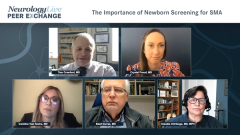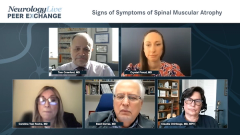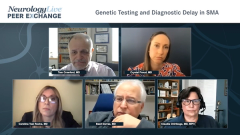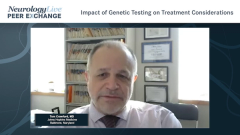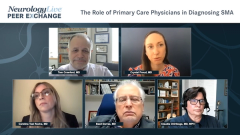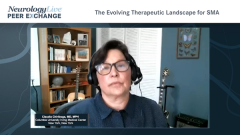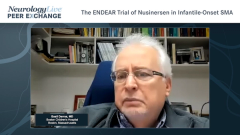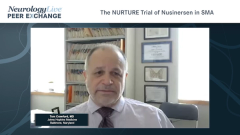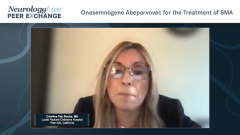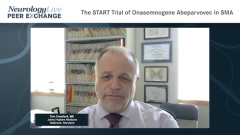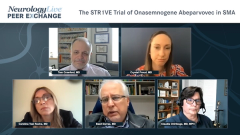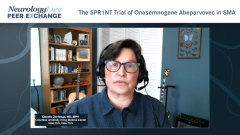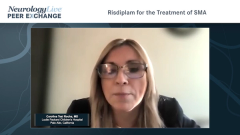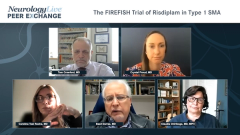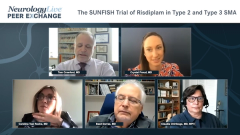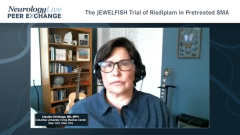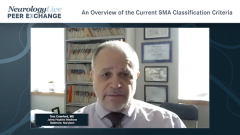
An Overview of the SMA Classification Criteria
Thomas Crawford, MD, discusses the classification of different phenotypes of SMA and comments on the degree to which these classifications are relevant to treatment approaches.
Episodes in this series

Crystal Proud, MD: Hello and welcome to this NeurologyLive® Peer Exchange titled “The Changing Landscape in the Treatment of Spinal Muscular Atrophy.” I am Dr Crystal Proud from the Children’s Hospital of the King’s Daughters. Joining me today in this virtual discussion are my colleagues, Dr Claudia A. Chiriboga from Columbia University Irving Medical Center in New York, New York; Dr Tom Crawford from Johns Hopkins Medicine in Baltimore, Maryland; Dr Basil Darras from Boston Children’s Hospital in Massachusetts; and Dr Carolina Tesi Rocha from Lucile Packard Children’s Hospital at Stanford in Palo Alto, California. Today, we are going to discuss a number of topics pertaining to the diagnosis and treatment of spinal muscular atrophy. Let’s get started on our first topic. We are going to review the diagnosis of spinal muscular atrophy [SMA]. Tom, can you talk to us about how spinal muscular atrophy is categorized by phenotype?
Thomas Crawford, MD: I love this topic. It is a history lesson. In the old days, there were different forms of SMA, and people steadfastly believed that there were different kinds. They argued about it, and there were eponymous names, like Werdnig-Hoffmann and Kugelberg–Welander disease. Then in the 1990s, a single gene was found to be responsible for them all, and that made it interesting. As a consequence, what used to be eponymous designations shifted to types, and the types were defined by 2 criteria: age at which you saw that the kids were starting to get weak, and the maximum power that they achieved. That worked pretty well during that time when there was no therapy; you could see that there were those who were never able to sit, in which case you called it type 1. Those who were able to sit for a while were called patients with type 2. Those who were able to stand for a while and walk were seen as type 3. And somehow or another we defined type 4; I do not know that there was ever really great agreement on the idea, the onset was later and somewhat stronger, but this was the so-called adult-onset type.
All that breaks down now as we are in an era where we can actually do something about it because we are going to be—hopefully—treating people before they manifest weakness, and the idea of patients having maximum power before they decline is now, happily, part of the history books. We are going to have to continue to use the type designations for the purpose of history, and perhaps for management, because people who were classified as type 1s and type 2s have definite problems.
For people with type 1 variations, their hold on life is difficult because they have breathing problems. Those with type 2 oftentimes have problems with scoliosis, other deformities, or wheelchair needs. For the people who have suffered the consequences of substantial damage to their motor neuron pool before they could have these therapies, these types still are meaningful because they predict aspects of therapy. For those going forward, who we expect to be able to treat, I think the types are going to become an anachronism and something we would no longer use. I think that the new type, the new designation, is going to be based along the line of copy numbers, and we will get into that a little bit later.
The second gene, the SMN2, copy number correlates with severity; more copies are better. Also important is the age at which therapy was initiated. People who were treated relatively late after the onset of a fair amount of motor neuron degeneration will have a worse outcome than those who are treated very early. It used to be about age at onset and maximum function. I think, now, it is going to be the copy number and age at the initiation of therapy that are going to be the 2 major determinants of where people are. I look forward to this being the new nosology of SMA.
Crystal Proud, MD: Absolutely. It sounds like things are changing and they are changing rapidly, and we are going to need to recharacterize. We will talk more about that in a bit.
Thank you for watching this NeurologyLive® Peer Exchange. If you enjoyed the content, please subscribe to our e-newsletters to receive upcoming Peer Exchanges and other great content right in your inbox.
Transcript Edited for Clarity
Newsletter
Keep your finger on the pulse of neurology—subscribe to NeurologyLive for expert interviews, new data, and breakthrough treatment updates.

